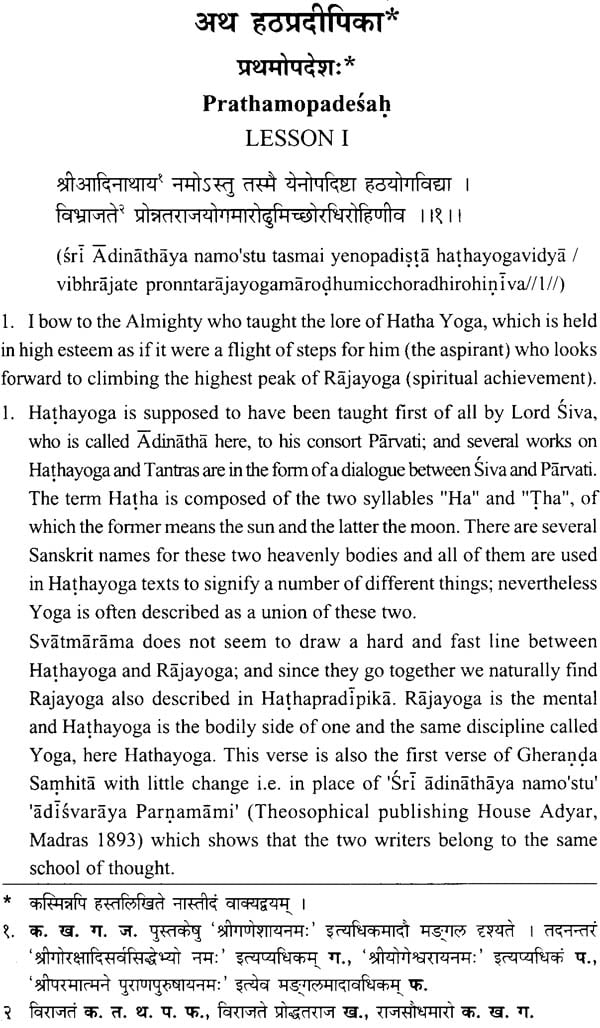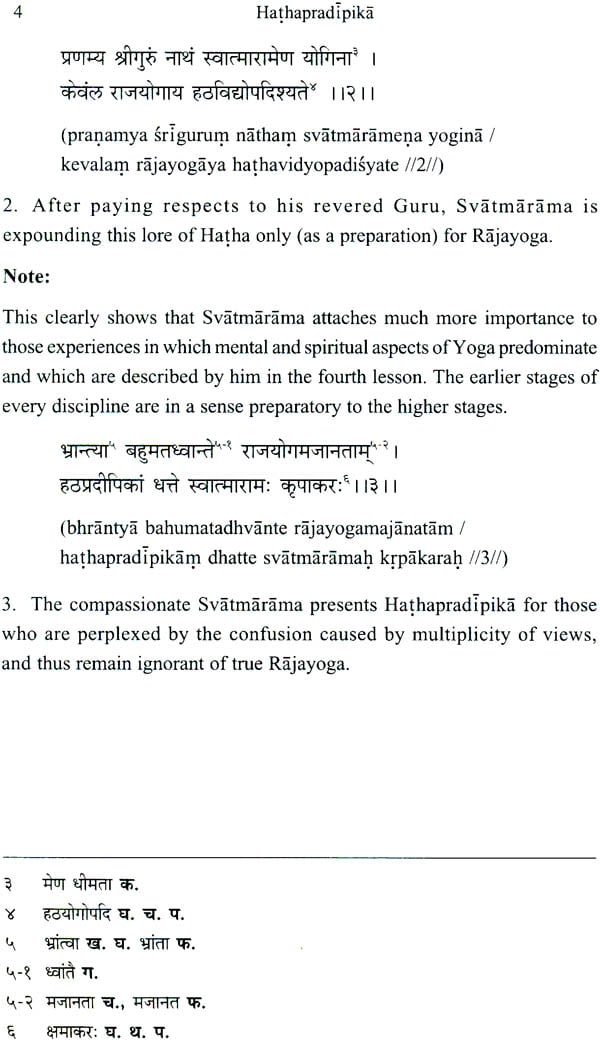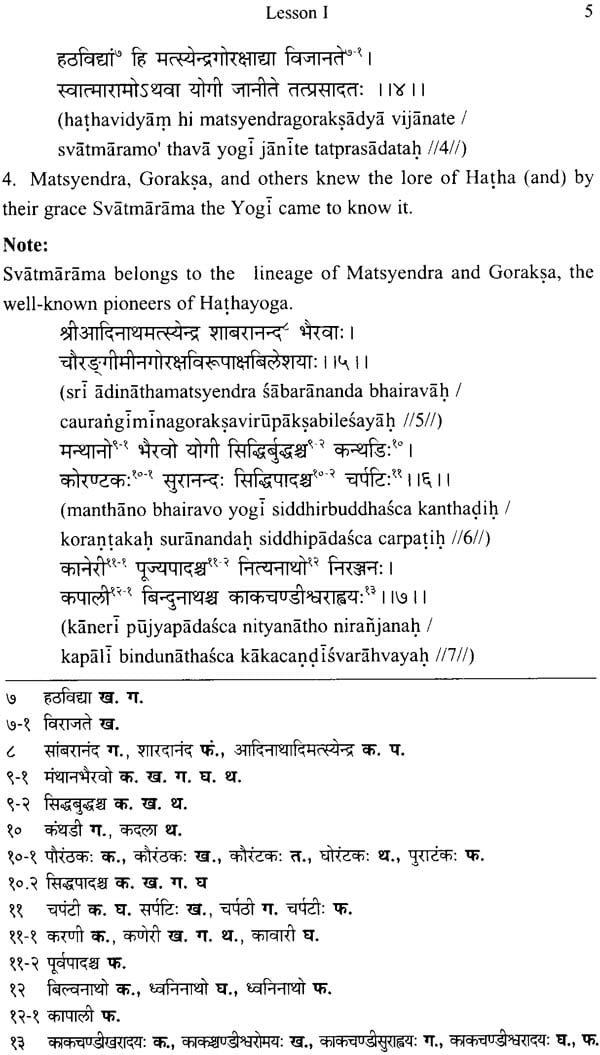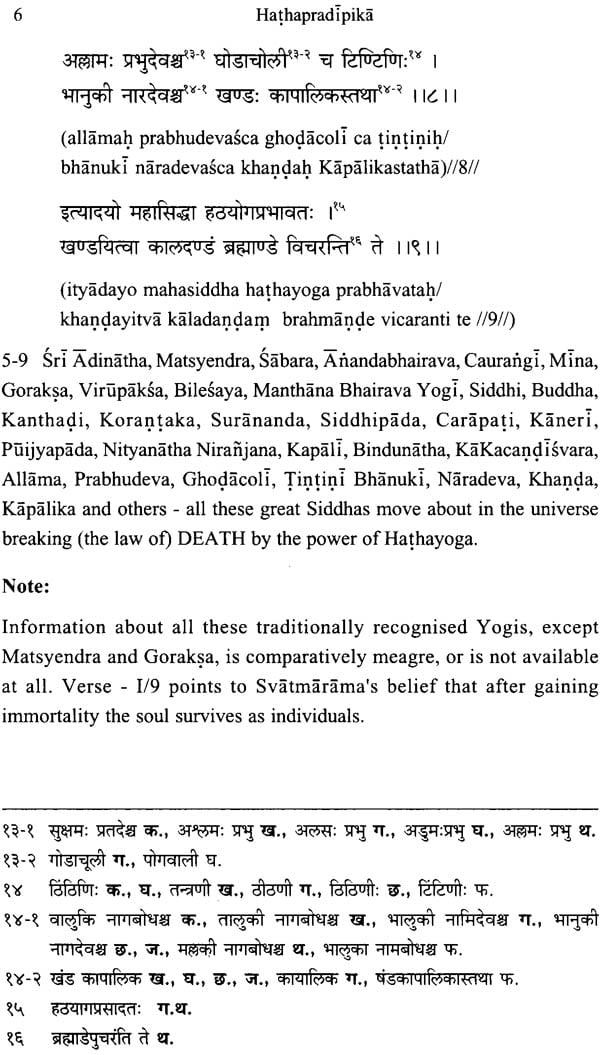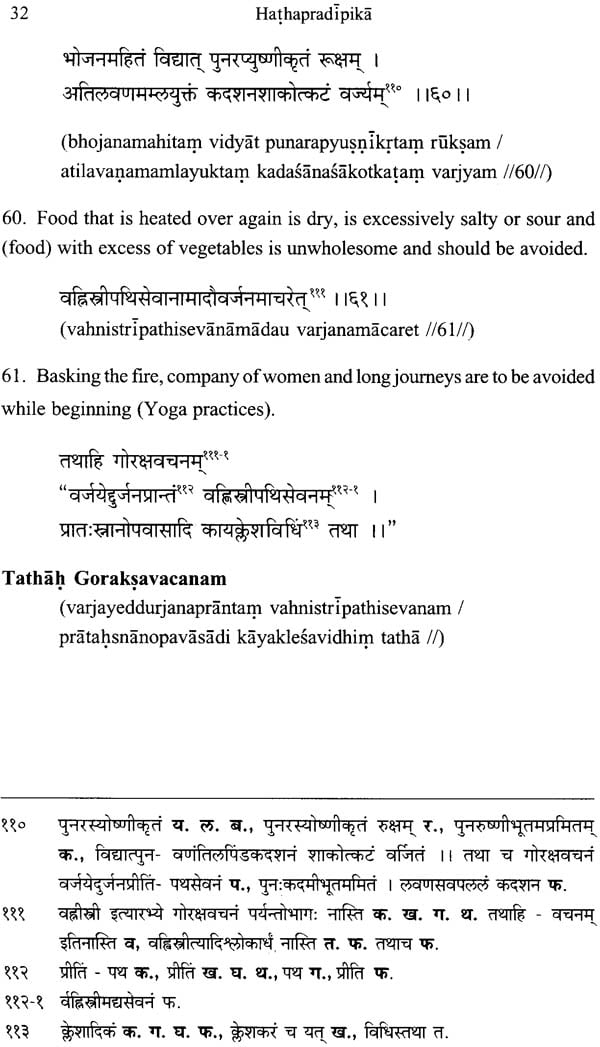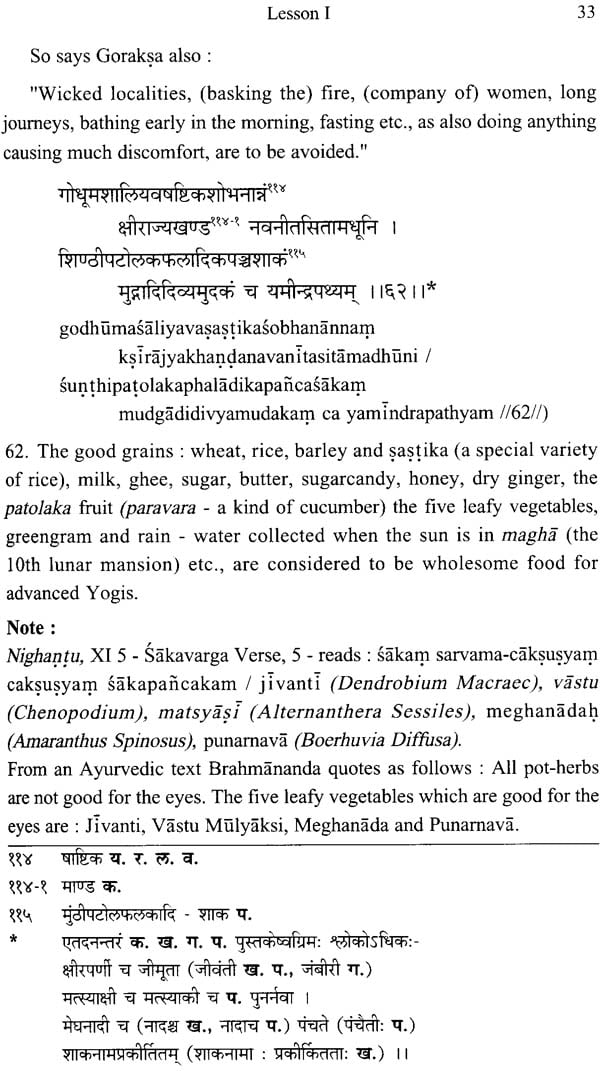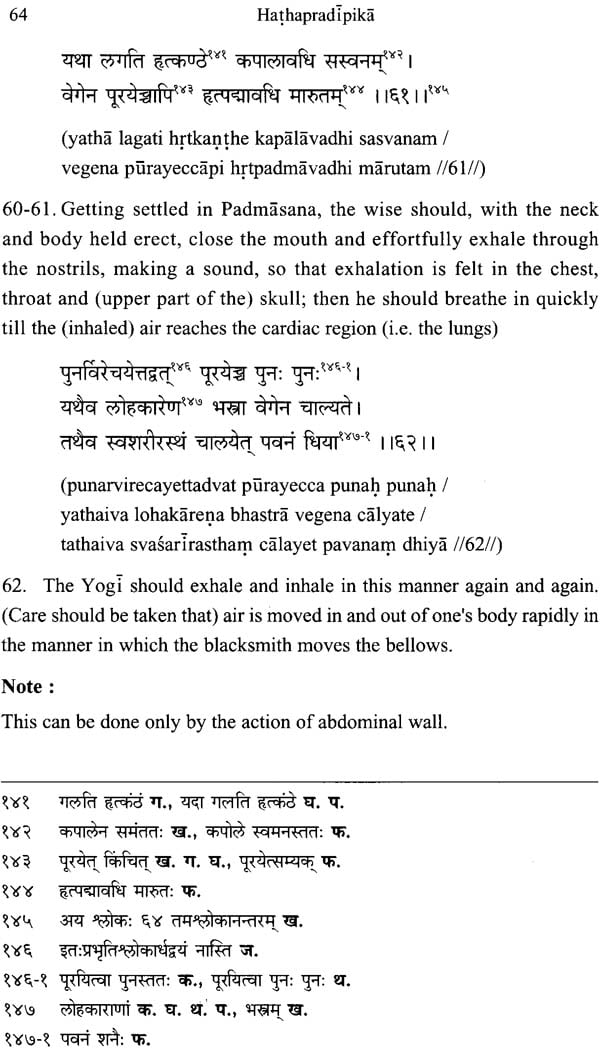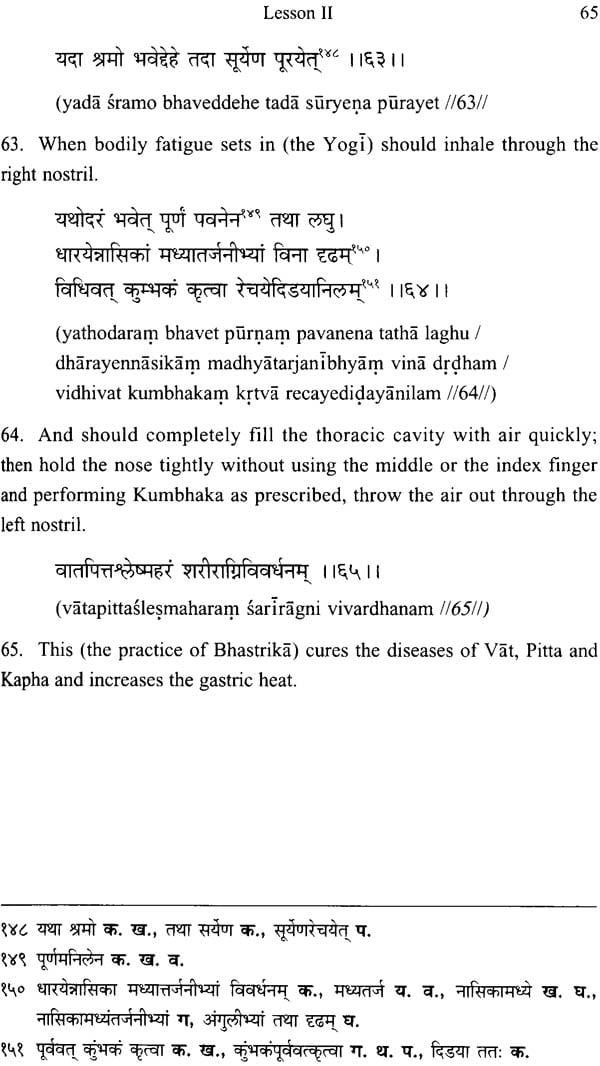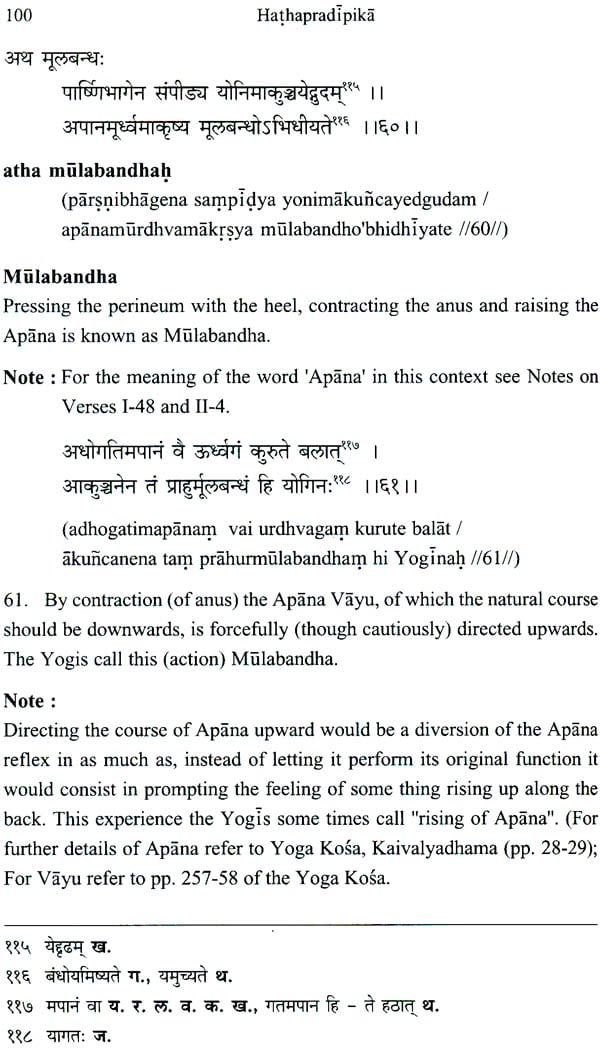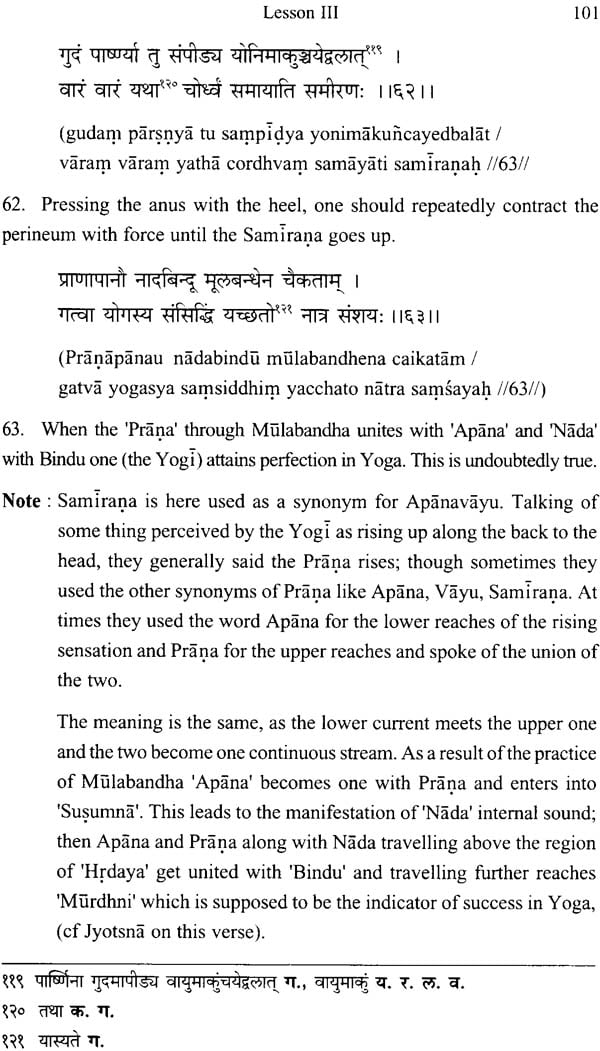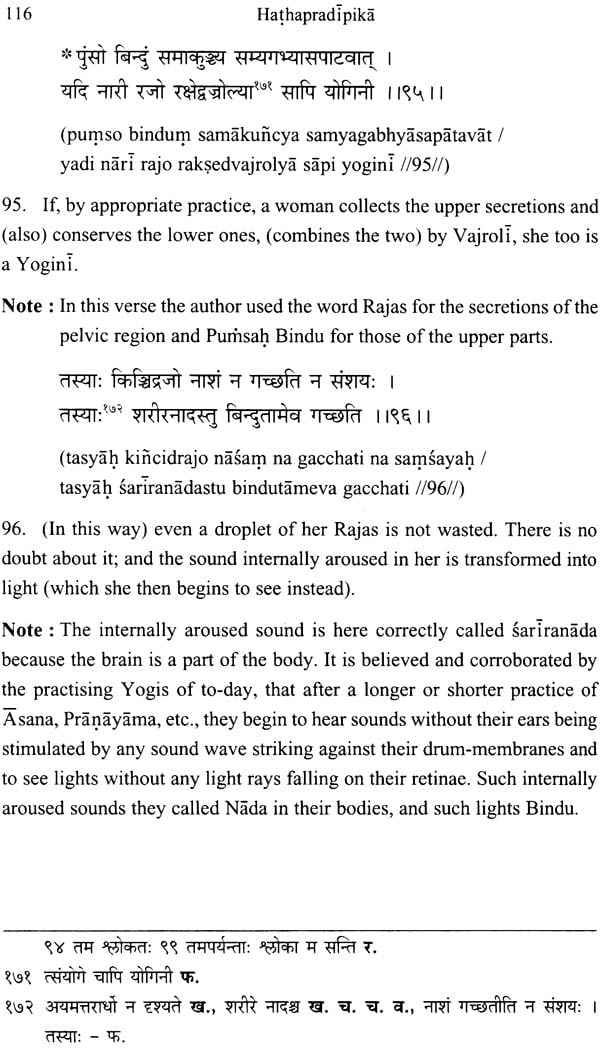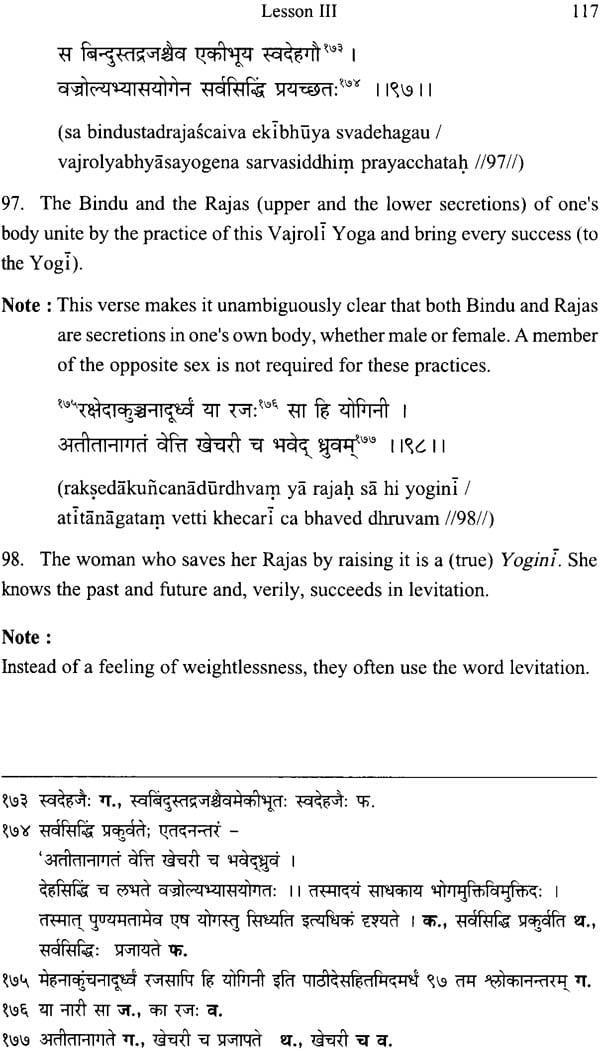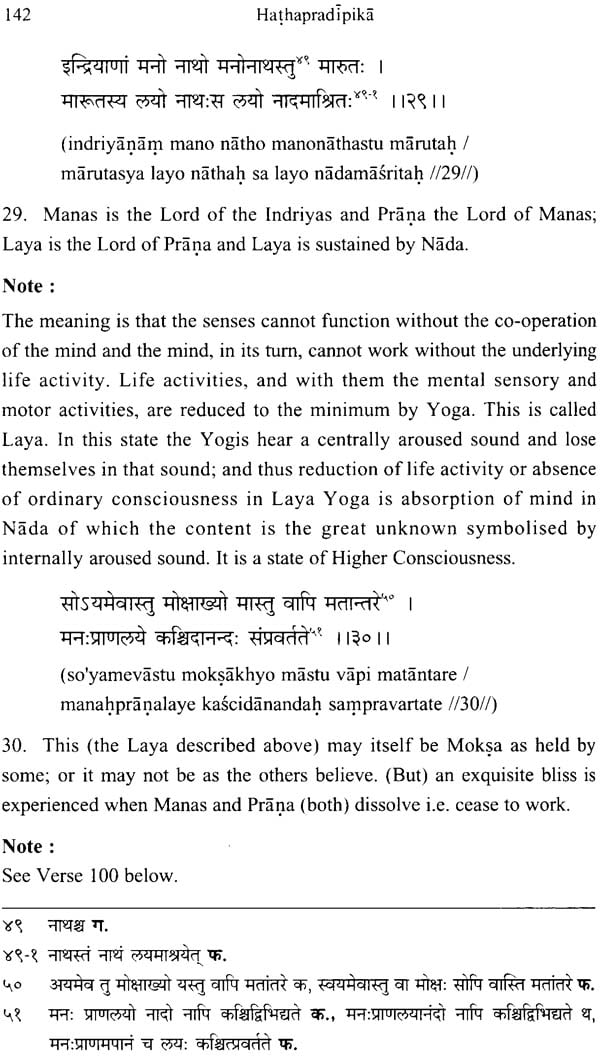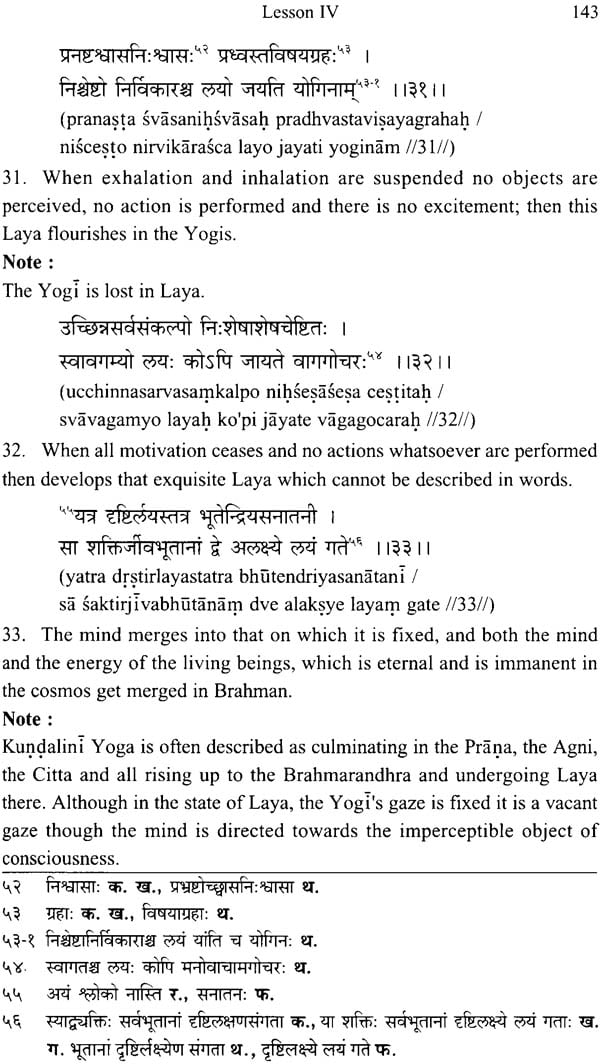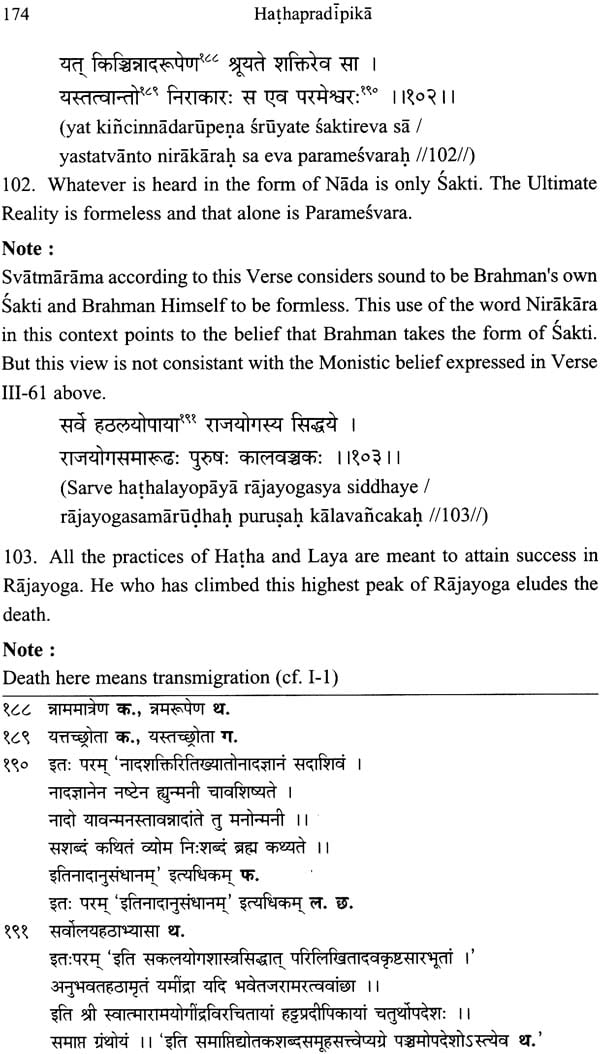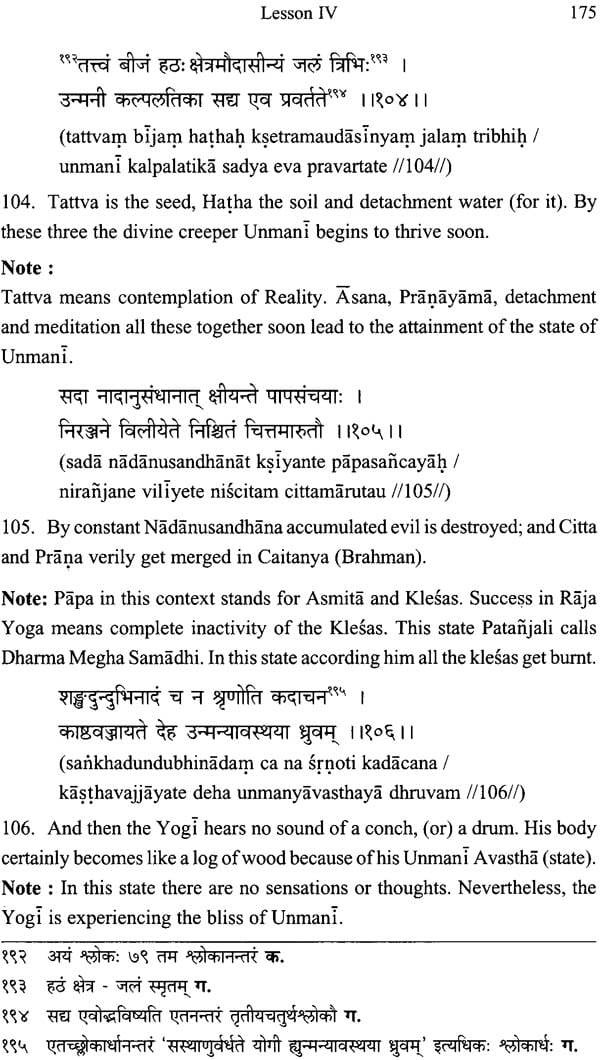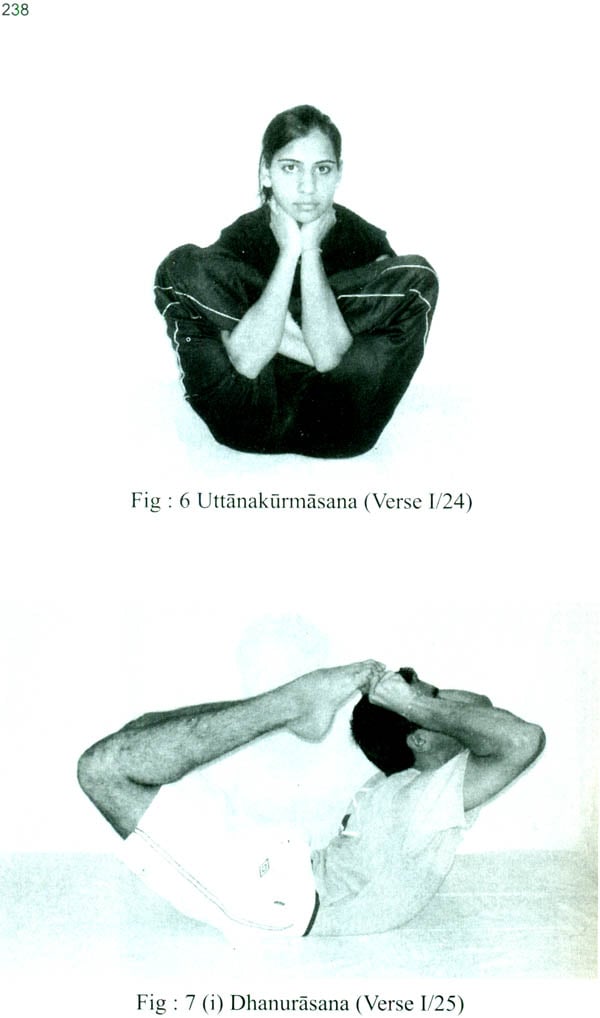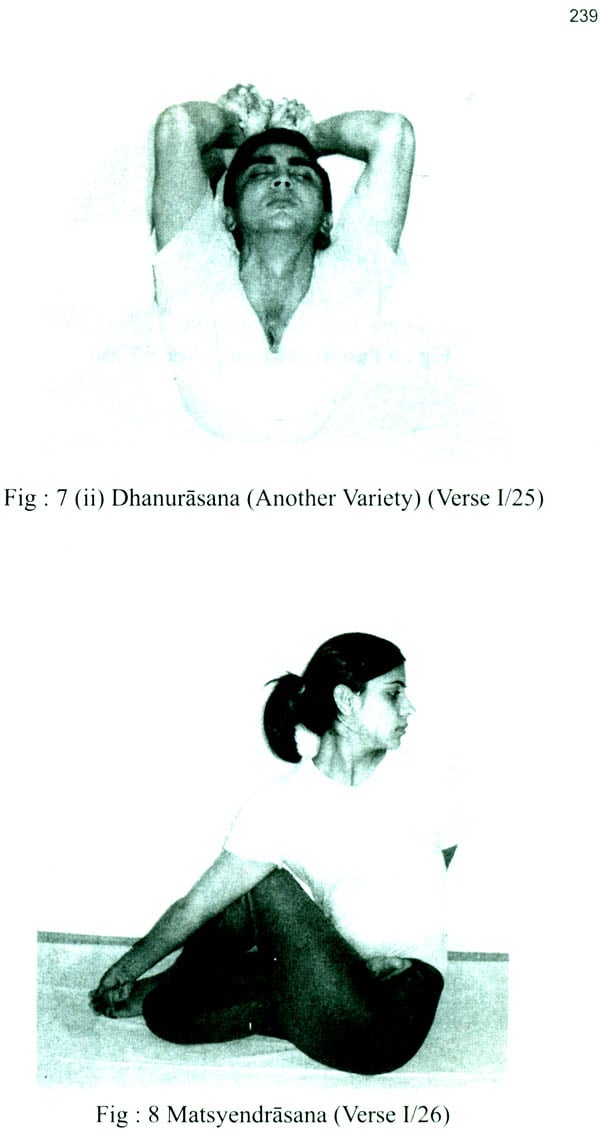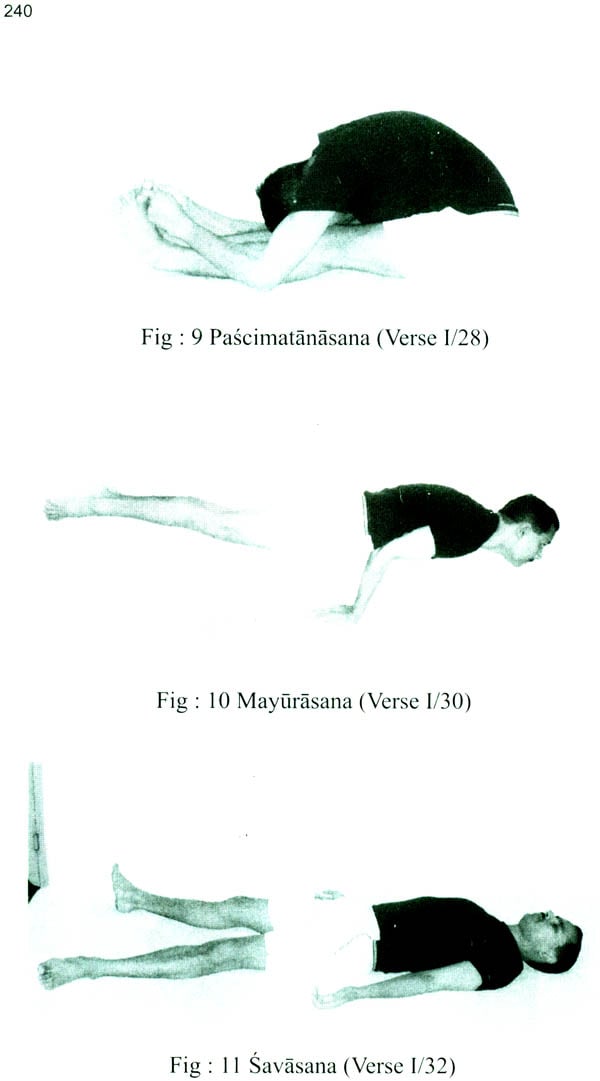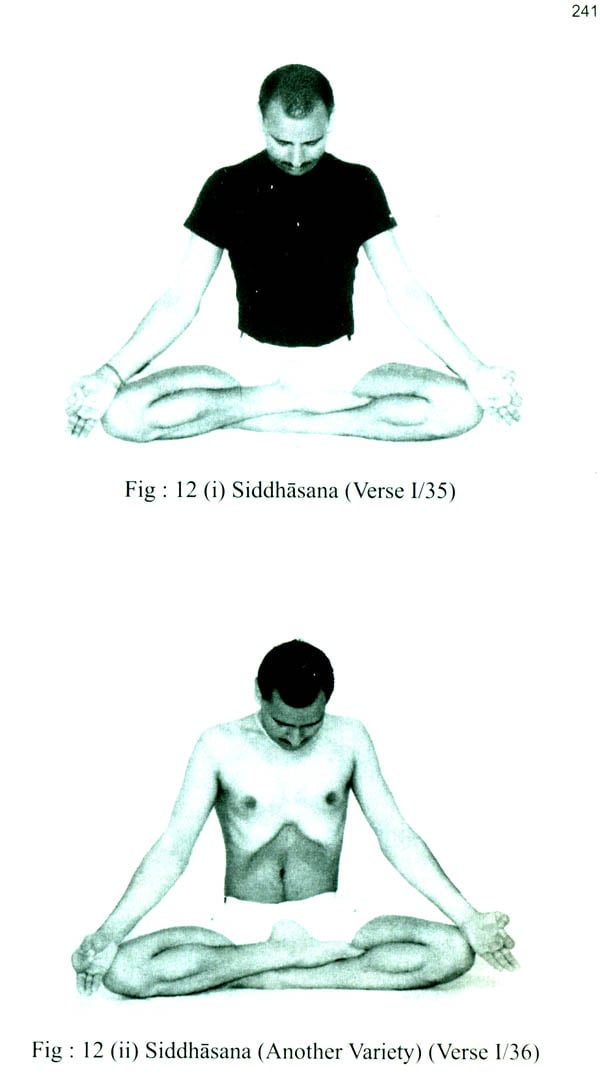
Hathapradipika of Svatmarama (Original Text, Transliteration, Translation and Notes)
Book Specification
| Item Code: | IDJ206 |
| Author: | Swami Digambaraji & Pt.Raghunatha Sahstri Kokaje |
| Publisher: | Kaivalyadhama Samiti Lonavla |
| Language: | (Original Text, Transliteration, Translation and Notes) |
| Edition: | 2018 |
| ISBN: | 9788189485122 |
| Pages: | 290 (Black & White Figures: 26) |
| Cover: | Paperback |
| Other Details | 8.8" X 5.6" |
| Weight | 320 gm |
Book Description
Preface
Though several Indian and foreign editions of Hathapradipika have come out, so far as our knowledge goes, none of these editions has been critically edited. The editions we have seen seem to be based on a single manuscript and none of these editors has considered it necessary to give any particulars about the manuscript or even to say where it has been preserved. Moreover, all these editions contain several gross errors. Hence, as Hathapradipika is a lucid description of Hatha Yoga, the Kaivalyadhama S.M.Y.M. Samiti, Lonavla, considered it its duty to publish a Critical Edition of this Text.
The late Swami Kuvalayananda of revered memory and Shri R.G.Kokaje have been working on the preparation of this critical edition for some time; but its publication has been made possible only this year because the Government of India sanctioned a publication grant for which we are deeply grateful.
We are thankful to the following members of the staff who helped us in preparing this critical edition.
Dr. P.V. Karambelkar, M.Sc., Ph.D., Dr. Mahajot Sahai, M.A., Ph.D., Dr. M.V.Bhole, M.B.B.S., M.D., Dr. G.K.Pai, M.A., Ph.D., Dr. Vijayendra Pratap, M.A., Ph.D., D.Y.P., Shri M.L.Gharote, M.A., M.Ed., D.Y.P., Shri O.P. Tiwari, M.A., Sahityaratna, D.Y.P., Shri R.K.Sahu, M.A., D.Y.P.
Svamarama treatise on Hathayoga has been held in great esteem both by scholars and practicing yogis. Though this writer’s emphasis is on yogic practices in which overt behavior plays an important part it is he who points out that the yogic processes form a continuum. He therefore did not consider Hathayoga and Rajayoga to be different compartments of yoga as they are generally believed to be and stressed their interdependence (cf hatham vina rajayogo rajayogam vina hathah/na siddhyati tato yugmam ansipatteh sumabhyaset.
Hathpradipika is one of the outstanding Hatha texts which fully describe the eight well known varieties of Pranayama Svatmarama’s work has proved to be a source of inspiration for many a later writer on Hathayoga as can be seen fro treatises like Yogacintamani Hatharatnavali Hathasanketacandrika and Hathatattvakaumudi as explicitly mentioned by him in I-18 Svatmarama has successfully brought about a synthesis of both the traditions of Hathayoga viz that of the munis and that of the yogis.
The opinion that all impurities in the nadis can be removed only by the practice of Pranyama has been explicitly mentioned by Sva tmarma alone. According to him the satkriyas are not obligatory for all. They are however to be practiced by all those who have an excess of meda slesma etc.
Yoga as described by Svatmarama has only four components while according to other authorities on Yoga it is said to have six, seven, eight and even fifteen components.
In the Puranas and the smrtis two types of Pranayama have been mentioned (1)Sagarbha with mantras and (2) Agarbha without recitation of mantra svatmaram however does not enjoin that practice of Pranayama should be accompanied with recitation of a mantra.
Svatmarama does not include Yamas and Niyamas among Yogangas (Components of Yoga) but he accepts their pre requisitory value in the path of Yogic practices curiously enough he includes Ahimsa in Niyamas and Mitahara in Yamas (I-38). This shows that he follows a different tradition than that of Patanjali and other. Though Dattareyasamhita and Yogatattvapanisad (28) also include Ahimsa among the Niyamas and Mitahara among yamas strangely enough they do not give a detailed picture of Yamas and Niyamas Paramartha however includes Mitahara in Yamas and Ahimsa in Niyamas.
| 1. | Preface to the First Edition | vii |
| 2. | Preface to the Second Edition | ix |
| 3. | Abbreviations | xi |
| 4. | Scheme of Transliteration | xiii |
| 5. | Introduction | xv |
| 6. | Sanskrit Text, Transliteration in Roman Characters, English Translation and Critical Note. | |
| Lesson - I | 1 | |
| Lesson - II | 37 | |
| Lesson - III | 73 | |
| Lesson - IV | 130 | |
| Lesson - V | 181 | |
| 7. | Appendices : | |
| Appendix-I List of the Verses of Hathapradipika available in Other Texts | 191 | |
| Appendix II Stanzas not found in the Hathapradipika but cited in other Books as Belonging to Hathapradipika. | 207 | |
| Appendix-III Word Index | 209 | |
| Appendix IV Index of Half verses | 219 | |
| Appendix V Bibliography | 233 | |
| Appendix VI List of Illustrations | 237 | |
| Photographs of Yogic Practices referred of Yogic Practices referred to in the Text. | 239 |
